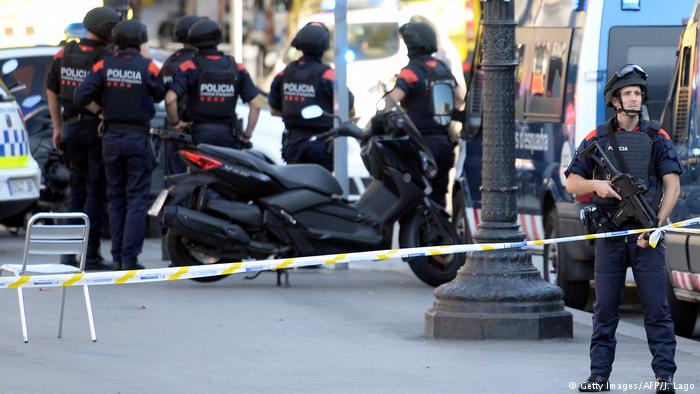Barcelona terror cell
August 21, 2017 | Expert Insights

The terror cell behind the Barcelona attack was planning multiple other vehicle attacks across Spain.
According to the Spanish police, the group had collected 120 gas canisters for future attacks.
Background
One of the deadliest attacks in Barcelona’s history took place on August 2017. A van drove right into people at one of the busiest intersections of the city killing 13 and injuring multiple others. The Islamic State (ISIS) has claimed responsibility for the act.
The attack in Barcelona began at around 4.50pm on Thursday. It occurred in a popular and busy section of the city called the Las Ramblas area. The van that ploughed into the crowd had been rented. According to witnesses, the vehicle deliberately targeted people while moving at a high speed.
The police also have claimed to have thwarted another terror attack by shooting down and killing five men with links to the attack.
This was one of the deadliest attacks the country has seen since 2004 Madrid train bombings which claimed the lives of 192.
Analysis
The police have also mounted a massive manhunt for the alleged driver of the van. 22-year-old Younes Abouyaaqoub, is suspected of being behind the wheel during the attack. He was born in Morocco and was living in Barcelona.
The police have noted that they don’t currently know the location of the perpetrator and are not sure if he has left Barcelona. There are 800 vehicle check points and the government has tripled the number of officers working on anti-terror operations but it has so far been unsuccessful. During a press conference, police chief Josep Lluís Trapero said, “If we knew that he was in Spain and where, we would go after him. We don't know where he is."
Trapero has revealed more details regarding the terror cell that was behind the terror attack. According to him, there were 12 members operating as part of the cell and had been planning the attack for more than six months. Four of them have been arrested and two are unidentified. He said, “"We're starting to see clearly that [the Alcanar house] was the place where they were preparing explosives for one or more attacks in the city of Barcelona. We are not in a position to say what caused the radicalization of these people."
Tributes have poured in from across the world for the fallen victims of the terror attacks. Thousands living in Barcelona have also held vigil in honor of those who were attacked.
ISIS has claimed responsibility for the attack, however further details have not been provided.
Assessment
Our assessment is that the world is becoming more vulnerable as terror cells continue to increasingly adopt vehicle attacks. What has emerged is that Ripoll is where the members of the cell became friends and played side by side football together, and apparently, helped each other along the path to radicalization, hatred and mass murder. The pattern of radicalization is quite familiar to most counter-terrorism experts. Most of these youths were sent to jail for crimes which can at best be construed as a criminal activity. It is in the prison that they meet extremely radicalized prisoners who have done heinous crimes. Abdle Baki Es Satty, a former Imam in the town of Ripoll and a key suspect, was jailed in Castellon for smuggling cannabis. It is reported that it was here that he met Rachid Aglif, who was serving 18 years for the 2004 Madrid Bombings. This narrative is familiar to Kouachi Brothers, who had planned the Charlie Hebdo shootings in Paris.








Comments